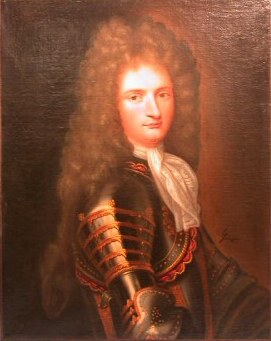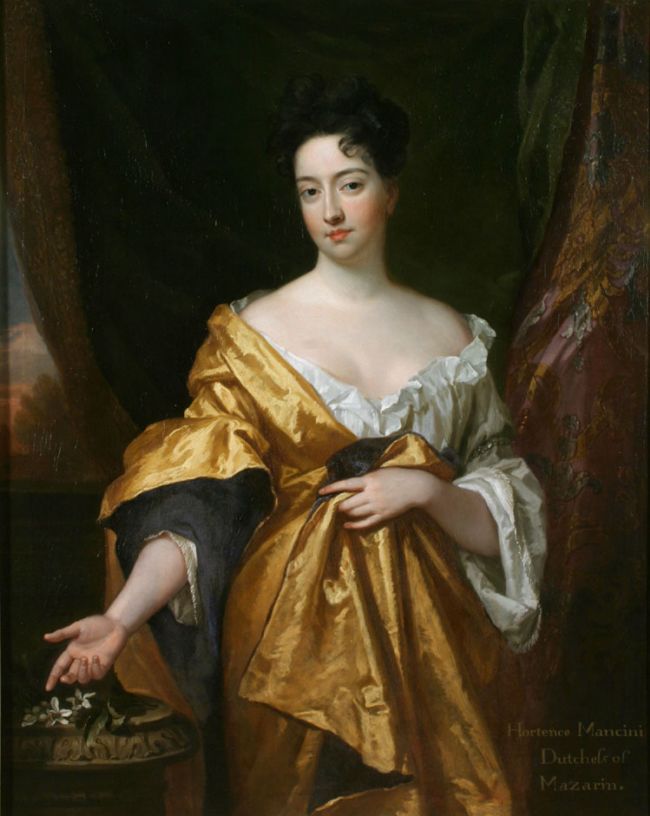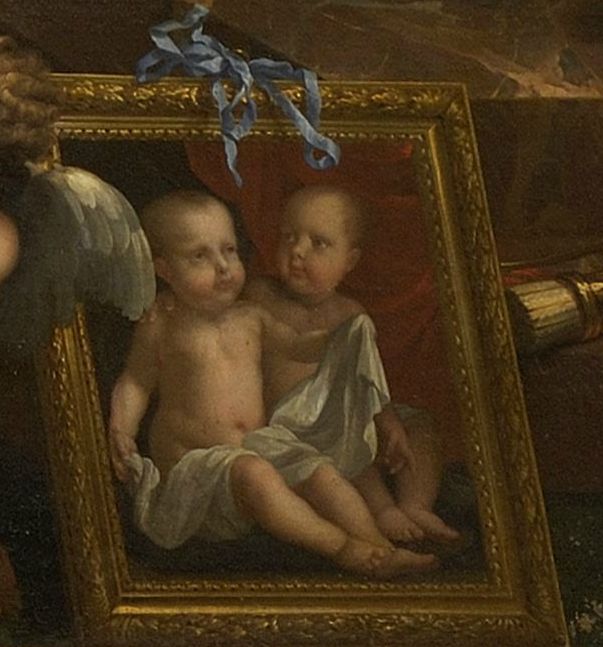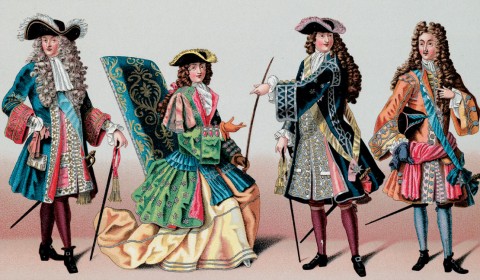Olympe Mancini, Comtesse de Soissons
Born on July 11 in 1638, as Olimpia and third child of Lorenzo Mancini and Geronima Mazzarini, sister of Cardinal de Mazarin, Olimpia adopted the French version of her name, Olympe, as she came to France along with her sister Laura Mancini, her brother Paul and cousin Anne Marie Martinozzi. The first set of Marazin relatives in France, which quickly became known as the Mazarinettes.
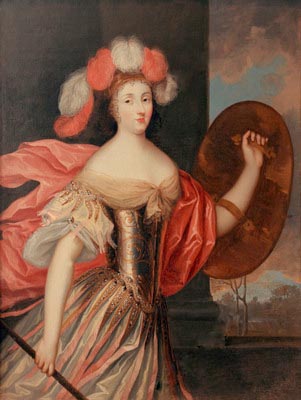
Cardinal de Mazarin meant for his nieces to marry well in France, preferable Princes or Ducs, and for his nephews to become attached to the young King of France, Louis XIV. This first set of Mazarinettes on French soil grew up along the young Louis XIV and his brother Philippe, with permission and guidance of Anne d’Autriche herself.
Their first stay in France did not last long however. Olympe, said to be “lean, with a long face, dark complexion and long mouth“, was forced to follow her uncle into exile during the Fronde, along with the rest of the Mazarinettes. They returned in 1652 and Mazarin continued his mission to have the girls married at once. The first lucky bride was Laura, by then also using the French version of her name, Laure. She married a legitimised prince of the blood, Louis de Bourbon, Duc de Mercœur and later de Vendôme. Mazarin was quite pleased with the match, which some saw as quite a scandal. The Mancini’s were noble, but thought to be not quite fit as brides for French Princes.
While the Cardinal busied himself to get the next niece into wedlock, Olympe enjoyed the ballet. In the role of the Goddess of Music and at the side of Louis XIV. He was eighteen and she sixteen. Olympe was not what was considered a true beauty and way too tall. Her hair and eyes dark, when blonde hair and blue eyes were a la mode, but she was lively and charming enough to wake a certain interest in Louis, and thus she became the first Mancini to share his bed. She knew how to amuse, to keep him entertained and both shared a passion for dancing. In turn she received a sun-shaped medallion and his attention.
Olympe’s turn to marry came in 1657, the chosen groom Eugène-Maurice de Savoie, Comte de Soissons. Grandson of Charles Emmanuel I, Duc de Savoie and Catherine Micaela of Austria, daughter of Philip II of Spain and Elisabeth of France, herself daughter of King Henri II and Catherine de’ Medici.
The marriage took place on the 24th February and Olympe thus became the Comtesse de Soisson, at court commonly referred to as Madame la Comtesse. She took up residence in the Parisian Hôtel de Soissons, not far from the Louvre, and hosted lavish balls for the King’s entertainment… but his interest moved slowly from Olympe to her younger sister Marie. Yet whenever he had enough of this innocent beauty, he returned to Olympe’s bed.
This changed as Olympe gave birth to her first child and due to it, was forced to remain away from court. Seven children followed, one of them being Louis XIV’s nightmare Prince Eugene of Savoy.
While Olympe was away, Louis and Marie became inseparable, just like him and Olympe once were…. just not in bed.
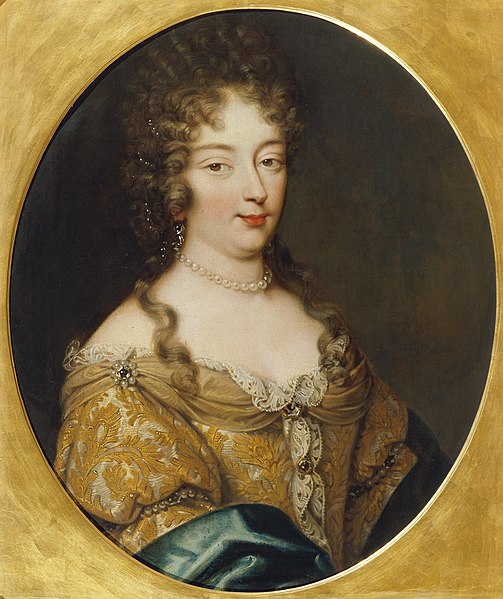
To make up for it, Olympe was appointed Surintendant de la Maison de la Reine, which gave her authority over and above that of all of the other ladies at court with the exception of the Princesses of the Blood.
Olympe soon became known as a woman rather fond of intrigues and participated in plenty of them. After her sister Marie was married off, she allied herself with Henriette d’Angleterre, the wife of Louis brother Philippe. Both women were eager to return to the bed of the King and in their attempt to do so, directed him into the arms of a other young lady of the court, Louise de La Vallière, in a intrigue-gone-wrong.
As both of them noticed that the King had an interest in Louise de La Vallière, they came up with another intrigue, involving the dropping of a letter in presence of the young Queen to make her aware of the affair of her husband. Once again, it did not work as planned. Olympe’s and Henriette’s alliance came to end, after the latter was involved in the downfall of the Comte de Vardes, Olympe’s chosen lover at the time.
Eugene Maurice died in 1673, aged only thirty-eight, and the now widowed Olympe found herself in the middle of a great scandal only a few years later. Her husband died at Unna in Westphalia, due to a fever, yet there were rumours that he had been poisoned… by Olympe. These rumours came back to life in 1679 as Olympe was accused of doing exactly that, along with plotting to have Louise de La Vallière poisoned. It was the time of the Affaire des Poisons, and as if this wasn’t enough already, she was also accused of threatening the King himself with the words, “Come back to me, or you will be sorry.“. At the same time, Olympe’s sister Marie Anne was also accused of wanting to poison her husband. True or not, the King gave Olympe the option of a trial and to lose everything, or to leave France. Olympe left the French soil at once. It was not be the last time her name was mentioned along with the word poison.
Only a few years later, Olympe was rumoured to have poisoned the Spanish Queen, Marie-Louise d’Orléans, eldest daughter of Louis’ brother Philippe and Henriette d’Angleterre, after she died suddenly of a severe pain in the abdomen.
Olympe was ordered to leave the Spanish court and travelled through Europe, before she settled in Brussels. Still claiming her innocence, she died there a few weeks after her 70th birthday, on October 9 in 1708.
